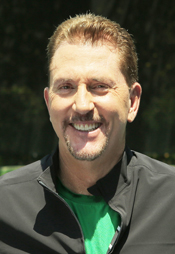What I Learned From the Inner Game
Part 3
John Yandell
In the first two articles in this series, What I Learned From the Inner Game, we focused on Gallwey's belief in the power of imagery (Click Here) and his iconic distinction between the two selves that coexist in every tennis player. (Click Here.) Now in this article let's turn to another major Gallwey opinion on watching the ball.
"Watch the ball!" is an admonition every player hears from every teaching pro, starting with his or her first lesson. In the Inner Game, Gallwey developed a new perspective on what that means.
Gallwey believed most players do not see the ball well, and often "think" about the ball, rather than actually paying attention. He wrote, "Watching the ball means to focus your attention on the sight of it."
The Seams
He believed the best way to achieve this was to "notice the exact pattern made by its seams as it spins." Focusing on the seams helped players see the ball earlier and watch it all the way to the racket.
"The ball should be watched from the time it leaves the opponent's racket to the time it hits yours," he wrote. But there is a question as to whether this is really possible. According to Dr. Paul Hamori who has written extensively for Tennisplayer on Federer's ball watching technique (Click Here), it's not. The human eye watches or focuses on moving objects like tennis balls through a series of "saccadic" jumps. This basic fact was confirmed by two other vision experts I talked to, Dr. Don Tieg and Dr. Damien Lafont.
Saccadic Jumps
Due to the complex nature of human vision, the eyes are literally blind for parts of the ball flight and the "image" of the ball is actually created by the brain. So, say you focus on the opponent's hit, your eyes have to jump to another focal point if you want to see the bounce and/or your own hit.
A study of table tennis players also confirmed this. Their eyes were directed by a saccadic movement to the opponent's contact, then jumped by another saccadic movement to the predicted contact point.
So Gallwey's idea of tracking the entire ball flight might actually impede your ability to focus on the contact. I contend that trying to follow the entire flight of the ball had a negative impact on my volleys.
My Volleys
I would hard focus on the ball off the other guys racket, but never made the "jump" to the contact point and started getting a lot more off center hits. Learning about saccadic jumps I changed my strategy and starting with a soft focus off the opponent's racket to read the shot, and then made the jump to the contact point. The result was a huge improvement in the quality of my hits and a big confidence booster that made me inclined to go in a lot more.
This is what noted vision training expert Don Tieg advises. He spent his career not in tennis but working mainly with elite baseball hitters, including one of the great clutch hitters of all time for the Yankees, Derek Jeter. (Click Here to see his book.)

He developed a strategy in which Jeter imagined he was "seeing" the insignia on the ball particularly just before and at the hit. Of course with the spin on the pitches he couldn't literally do this, but it was a way to stay on the ball til contact.
In an email to me he translated this technique to tennis:
"Soft center your focus at the moment of impact of the opponents ball strike. Immediately visualize the letter P in Penn or W in Wilson as the ball travels to your racket. Plant in your mind's eye that you will watch that letter "P" or "W" into your racket's sweet spot."
As with baseball Tieg said whether or not that can really happen is irrelevant. It's a way to make the saccadic jumps happen naturally.
This is very similar to what I learned to do with my volleys. And something I translated to my groundstrokes. Soft focus on the ball off the opponent's racket and then hard focus on the spin on the ball at the top of the bounce.
As Hamori discovered, Roger Federer took this to another level by turning his head sideways and focusing on the actual contact. And many players, including Tennisplayer subscribers, have benefited from this technique.

But since only a few top players do this, there must be other ways to find hard focus on the ball before contact.
This explains why players like Alexander Zverev, Nick Kyrgios, Novak Djokovic and others seem to be looking forward rather than directly at the ball at the split second of the hit. They must be making that jump to hard focus earlier, around or slightly after the bounce.
So how does this relate to Gallwey? No doubt he took the issue of ball watching to a new level of discussion. But his argument about tracking the seams doesn't seem to fit with the science or the evidence of what top players actually do.
However there was one other component to Gallwey's thinking that might be more in line with reality—his idea of watching and saying "bounce, hit." More on that next time!




